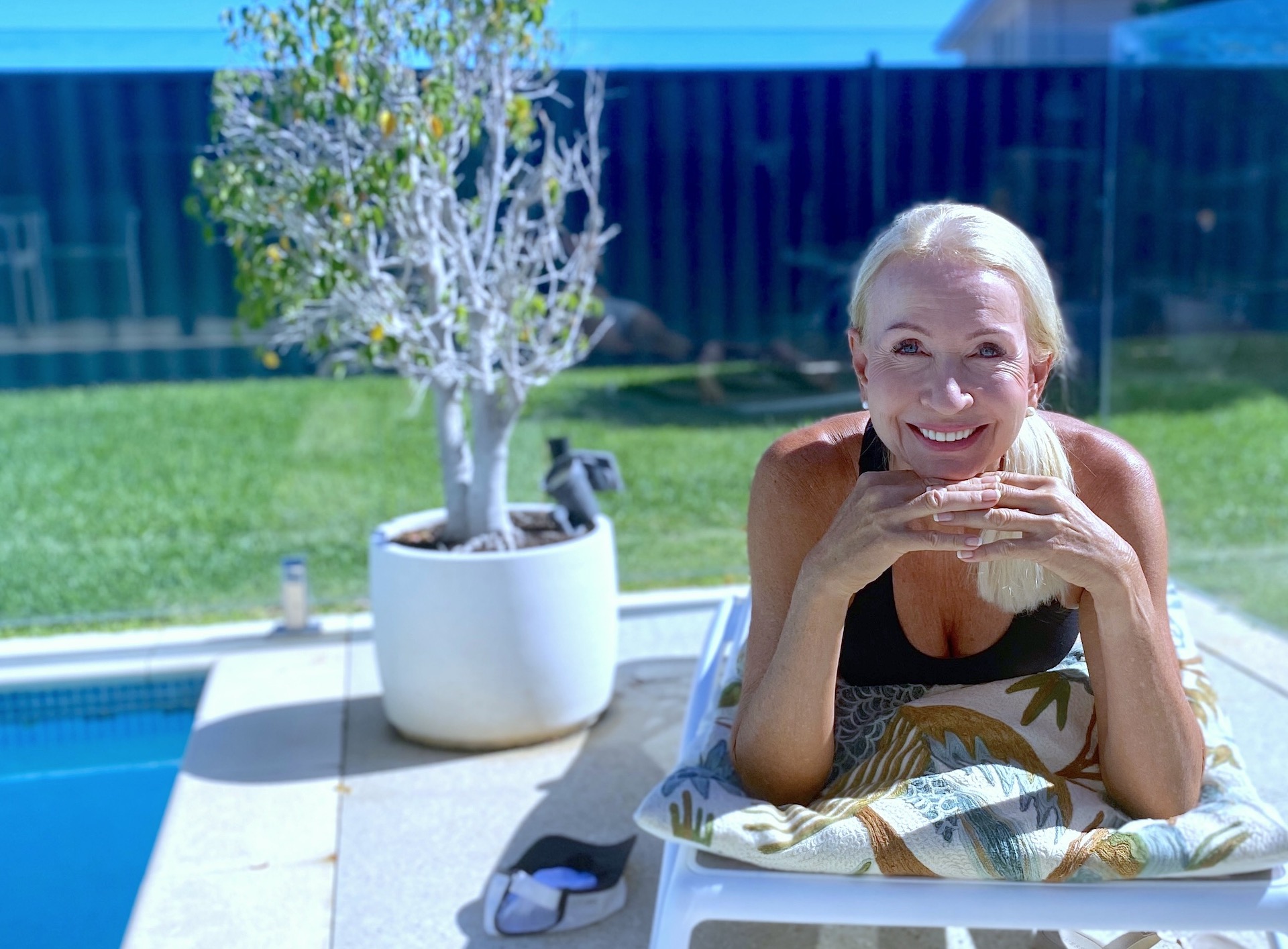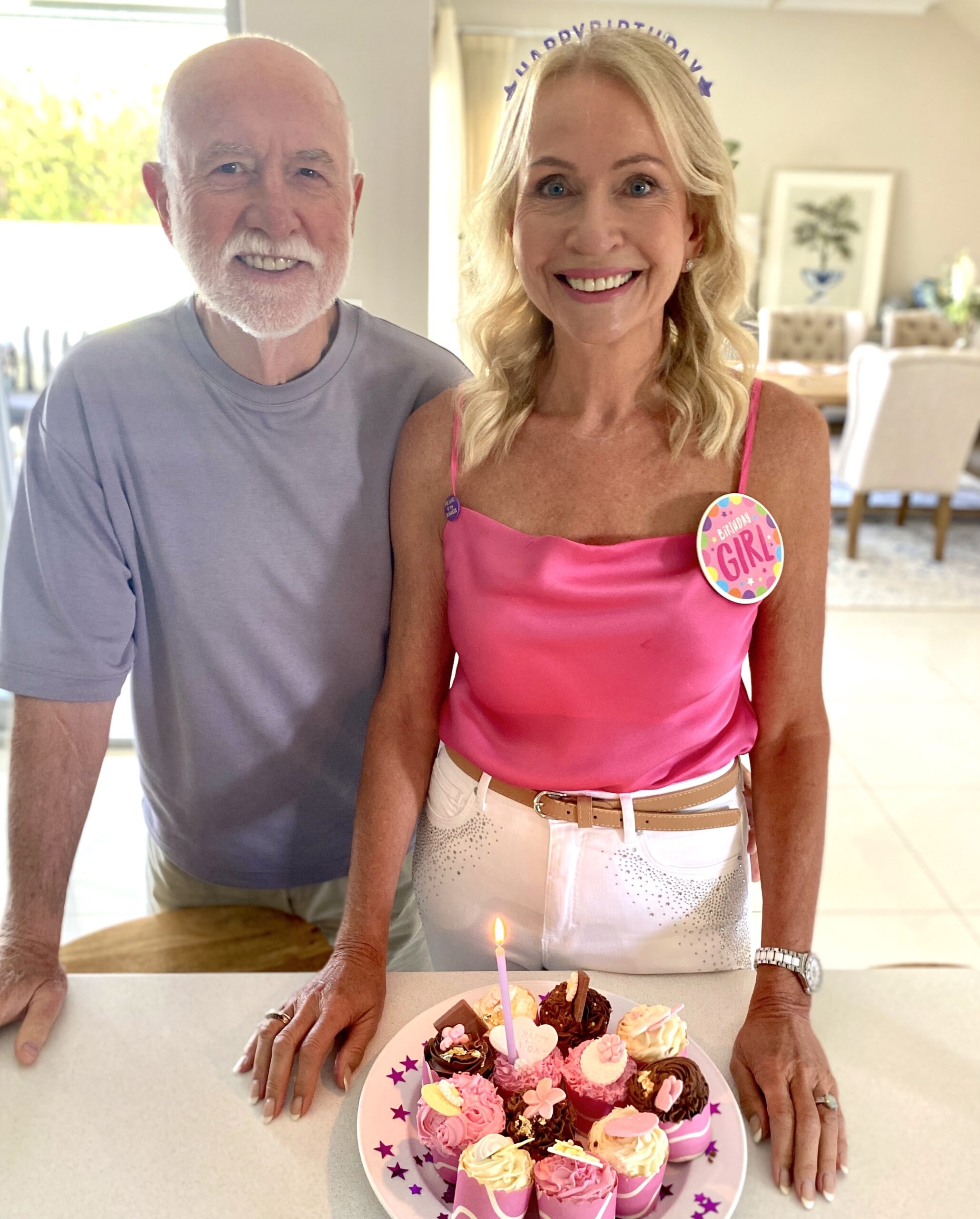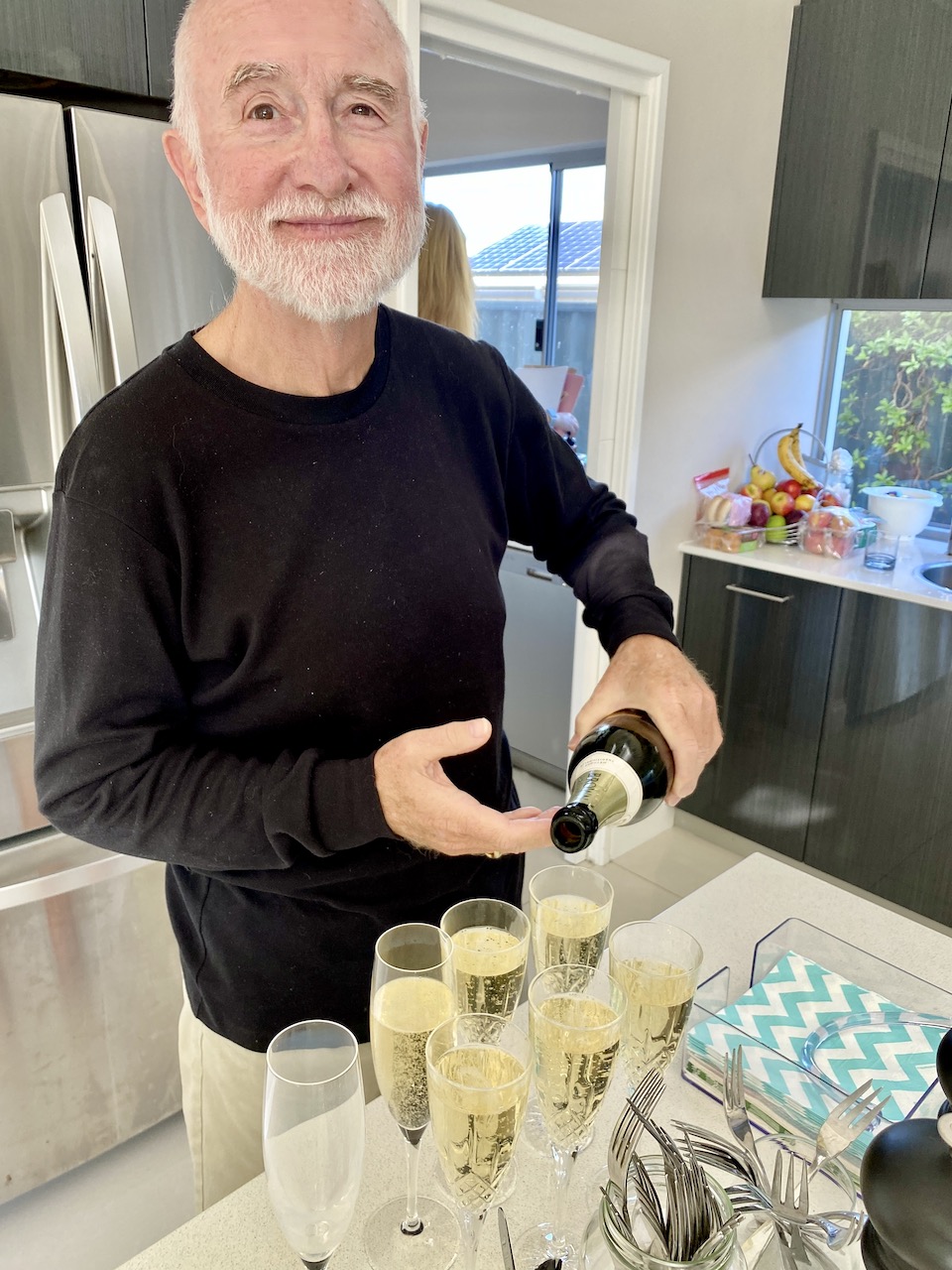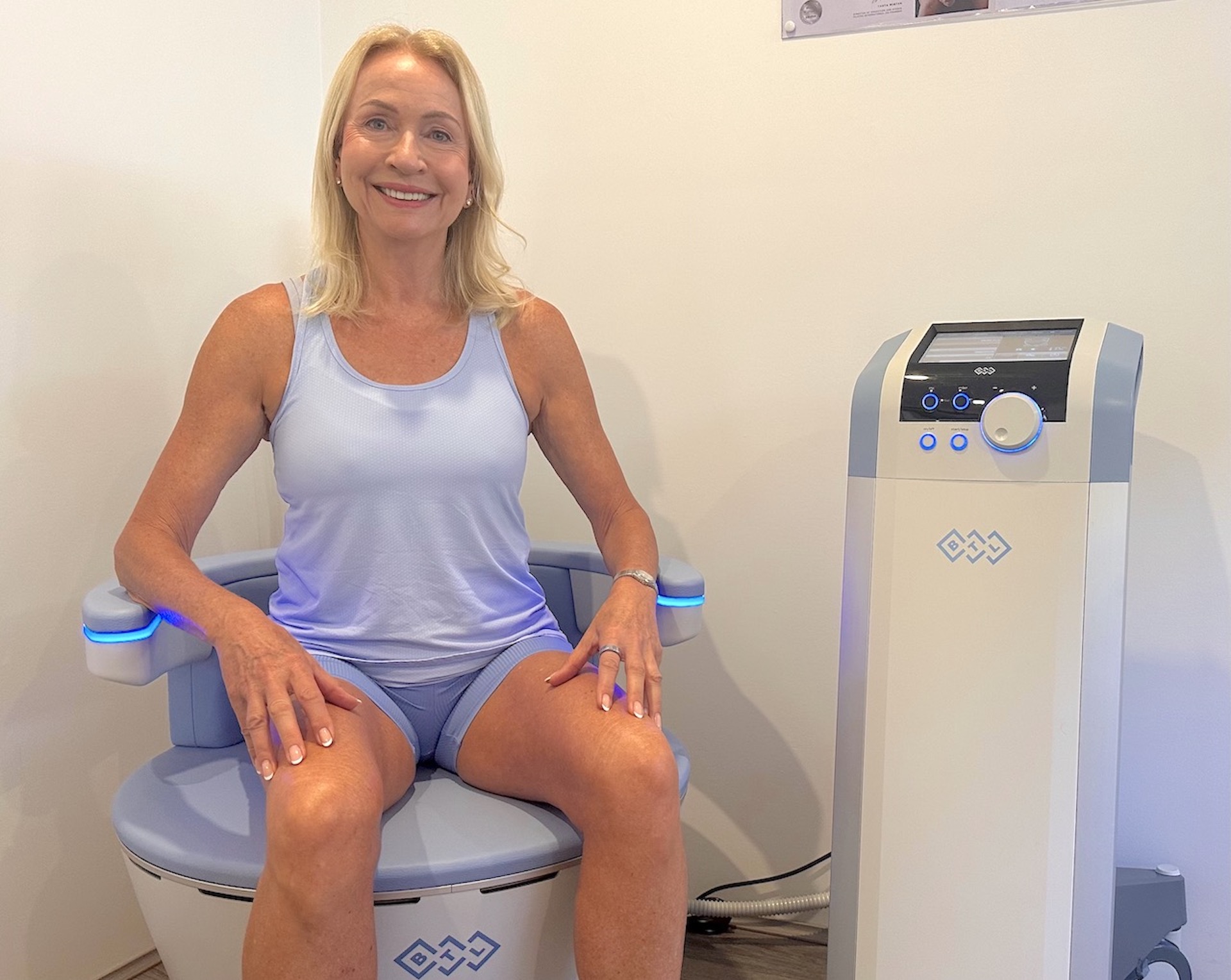How is your light diet? For your best night’s sleep ever and to reduce unwanted body fat, VERNE MAREE recommends hacking your circadian rhythm with red light in the morning, getting plenty of natural daylight, and minimising blue light after dark.
As promised in Part One of this series on light, here are some thoughts on how sunrise and morning light sets us up for a good night’s sleep, and how too much blue light can actually make us fat!
Good sleep depends on circadian rhythm – the 24-hour clock that is built into your brain. Ari Whitten’s Energy Blueprint website describes this as “the link between the outer world of light and darkness, and the inner world of our biochemistry”. When this rhythm is disrupted, it messes up your sleep.
Step One: Catch the Sunrise (or hack it)
A good night’s sleep starts with how you start your day. In order to sleep well tonight – you should have watched this morning’s sunrise! Catching the sunrise is one of the best things you can do for your circadian rhythm. But don’t worry if you can’t catch the sunrise. If you like, you can simply hack the benefits of getting red and infrared light onto your eyes and skin… like I do.

Early to bed and early to rise may all sound very well, but for me it’s not going to happen. In winter, it’s cold out there and I’m still asleep. Come summer, the sun rises while I’m still asleep, and rightly so. Now that I understand how vitally important it is for us to get enough good sleep, I’m wholly unapologetic about sleeping in, or even napping on occasion.
I’ve been an early riser in the dim and distant past – one of those annoying “I went for a jog before work” types – and might still be one if I’d married an early rising man. Which I didn’t. On a 1 to 10 scale of good sleepers, Roy is a 10: he’s a self-confessed snooze-till-nine kind of guy. Having to get up early is for him cruel and unusual punishment. My departing the marital bed too early also displeases him… it’s almost a personal affront, and even more so if his comfort is disturbed in any way by unwelcome light or sounds.
Anyway, still being effectively locked down in WA means I have fewer miles to go and fewer promises to keep. So I get up whenever I like, slip next door into the en-suite, and bask in front of my PlatinumLED full body red and near-infrared light panel for as long as I like.
Catching the sunset is heaps easier, let’s face it.
Finding time… or making time
It’s important that your red light device be accessible, so you actually use it. Our bathroom location has worked well: during the 18 months since I bought it, I’ve used it almost every morning, and for at least 30 minutes. And when Roy finally emerges from the barely rumpled sheets, he sits in front of it for 15 or 20 minutes while catching up on the news of the day. (Or surfing porn, who knows?)

It would be nice to have a dedicated space for it – I’m imagining a spa-like retreat, complete with a hot spa bath and infrared sauna – but that’s not an option where we are at the moment. It might be by the end of the year, though, when we move into our new house. (Weirdly, Roy seems intent on relegating my light panel, soon to be panels, to our new master bedroom’s walk-in wardrobe. We’ll see about that…)
My gym friend Yvette swears she doesn’t have time to do 20 minutes to half-an-hour a day – it’s so boring, so time-consuming! That’s because: (a) she’s a super-busy, A-type entrepreneur with a lot on her plate (click here for Ocean Magnesium, Yvette’s own line of high-grade supplements); and (b) her red-light device is a smaller, hand-held one that has to be manually shone at a particular body part. No wonder she finds it a bit tedious.

As for me, happily ensconced in front of my hands-free panel, I can check last night’s sleep score on my Oūra ring app (click here for my previous blog on the amazing Oūra sleep-tracker), book a gym class at Craigie Leisure Centre, catch up on Facebook or listen to yet another alternative health podcast. It’s possibly my favourite part of the day.
Which red light?
So, which red-light device is best? After hours of due diligence on the competition, including the decidedly more expensive Joovv that is almost universally promoted in the functional health podcast space – they must spend a fortune on marketing! – I decided on a full body panel from PlatinumLED, the BioMax 600. (Here’s a wonderfully informative review of this model that confirms I made the right choice.) It was also recommended by the great Ari Whitten, in Ultimate Guide to Red Light Therapy.



As the BioMax 600 cost over A$1,000 (currently US$899), it was held at Aussie Customs until I forked out another couple of hundred in import duties. Grrr. Still, the comparable Joovv model would have cost at least a third more, and delivered (1) lower beneficial irradiance; and (2) fewer therapeutic wavelengths. What’s more, PlatinumLED has the lowest EMF emissions of all the competition, even with close-up use. My only regret is not having forked out for the bigger version: the BioMax 900. (It’s on my wish list; either that, or another Biomax 600 to link up modularly – if that’s a word – with my current one.)
Step Two – Go Outside!
Probably even more important for circadian rhythm than getting red light first thing in the morning is exposing our eyes to bright morning light. Even if the sky is overcast, outdoor light is exponentially brighter than indoor light. Think 30 times brighter! Take your morning cuppa outside. Get sunlight on your face, in your eyes, and if possible on your body – ideally for at least half an hour, but even five minutes is beneficial.
Importantly, ditch the sunglasses whenever you can. Even five years ago, I would have dismissed this important advice without a second thought. My light blue, sadly myopic eyes were highly sensitive – genetically so, I used to think. I’d religiously worn sunglasses since my teens, and couldn’t imagine going without them.

Over the past couple of years, though, I’ve been gradually weaning my eyes from the crutch of sunglasses. In retrospect it’s been surprisingly easy – nowadays, I hardly wear them at all. For skin protection and glare reduction, I opt for what’s become my signature sports cap, or occasionally a shady hat. Let’s face it – squinting against the harsh WA summer sun is not a good look, either in the short term (crazy woman) or the long term (crazy, wrinkled old woman).

It goes without saying that I get plenty of sunshine. For the past few months, Roy too has been making a point of sitting outside for around half an hour most mornings. But that’s it; he doesn’t stretch out on the sun-lounger like I do, or spend hours on the beach.
Interestingly, too, he stopped using the Cetaphil Facial Moisturiser SPF 15 some time ago, and is doing fine with just a cap. The only time he got burnt this past long, hot summer was one midday when he simply spent too long on our building site, bareheaded, talking to supervisor Alex about deeply enthralling stuff like interstitial spaces, steel beams and streamlines. (The Raybans remain firmly in place, however.)

Tip: For a good night’s sleep, it helps to get more natural daylight in general. Even if you’re office-bound, try to pop outside for a few minutes whenever possible, to eat your lunch outdoors, or to go for a walk. Remember, our skin can only make Vitamin D in the middle of the day.
For more detail on this topic, check out this great article by Alex Fergus.

Step Three – Avoid Blue Light after Dark
Basically, we need to avoid artificial light as much as possible – especially at night, but also during the day.
Here I’m at risk of turning into my mother, who was severely irked whenever we turned on a light unnecessarily – an attitude I didn’t understand back then but now get completely. She was probably thinking of the electricity bill – that was way, way before global warming became an issue – but if she’d told 16-year-old me that artificial light would make me fat, maybe I would have listened.
How blue light can make you fat
Blue light at the wrong time of the day, that is. I’d heard it before, but I’m currently listening to Steven Gundry MD’s new book Longevity Paradox, where he explains how exposure to blue light at night makes us fat. Not so blue light at midday, where it belongs. (You can look him up if you like, but he’s not as cute as Ari Whitten.)
Most artificial light is from the blue range of the spectrum, which is also known to interfere with sleep. Our lives are now completely dominated by blue light from the time we get up to the time we go to bed, be it from computer screens and TVs to tablets and smartphones. Every time you look at your phone, for example, your eyes signal your brain that it’s daytime.
Blue light suppresses the production of melatonin, the hormone that helps you fall asleep and stay asleep. That leads to sleep deprivation – and sleep deprivation is associated with obesity. It sounds so counter-intuitive, doesn’t it? But it’s apparently true.

To save us all some time, naturopath Stephen Cabral explains it nicely in his recent Cabral Concept podcast #2287: Why Poor Sleep Causes Weight Gain. He says:
- People who get less than seven hours’ sleep tend to have high blood glucose, because they’re not tapping into blood sugar as they should be doing during the night. High blood sugar causes inflammation, so you retain water.
- Also, having less quality sleep – meaning deep sleep and REM sleep – causes you to be hungrier in the morning, and more likely to crave processed foods high in sugar and salt.
- Tired people are unlikely to exercise and tend to be low on willpower – so they expend less energy.
- Insufficient sleep affects hunger-regulation and fat-burning hormones leptin and ghrelin, causing them to become unbalanced.
- Thyroid hormone and cortisol, too, will go out of balance; over time, an exhausted body’s diurnal rhythm becomes dysfunctional and starts to produce less of that get-up-and-go morning cortisol.
Added to all that, lack of sleep is a stress that will disregulate neurotransmitters such as gabba and serotonin. What a state to get into! – as Roy likes to say.
Who knew that light could wreak such havoc on our bodies? The answer is to minimise blue light after the sun goes down, by: choosing low-level, reddish lights; activating the night-time mode in our devices and trying to stop using them at least an hour or two before bedtime; and wear blue-light-blocking glasses.
Such glasses might also be effective birth-control for those in their still-fertile years.

Up next? Maybe Part Three of How is Your Light Diet? – or something about my exciting new experiments on making your own yoghurt for revolutionary gut health.






